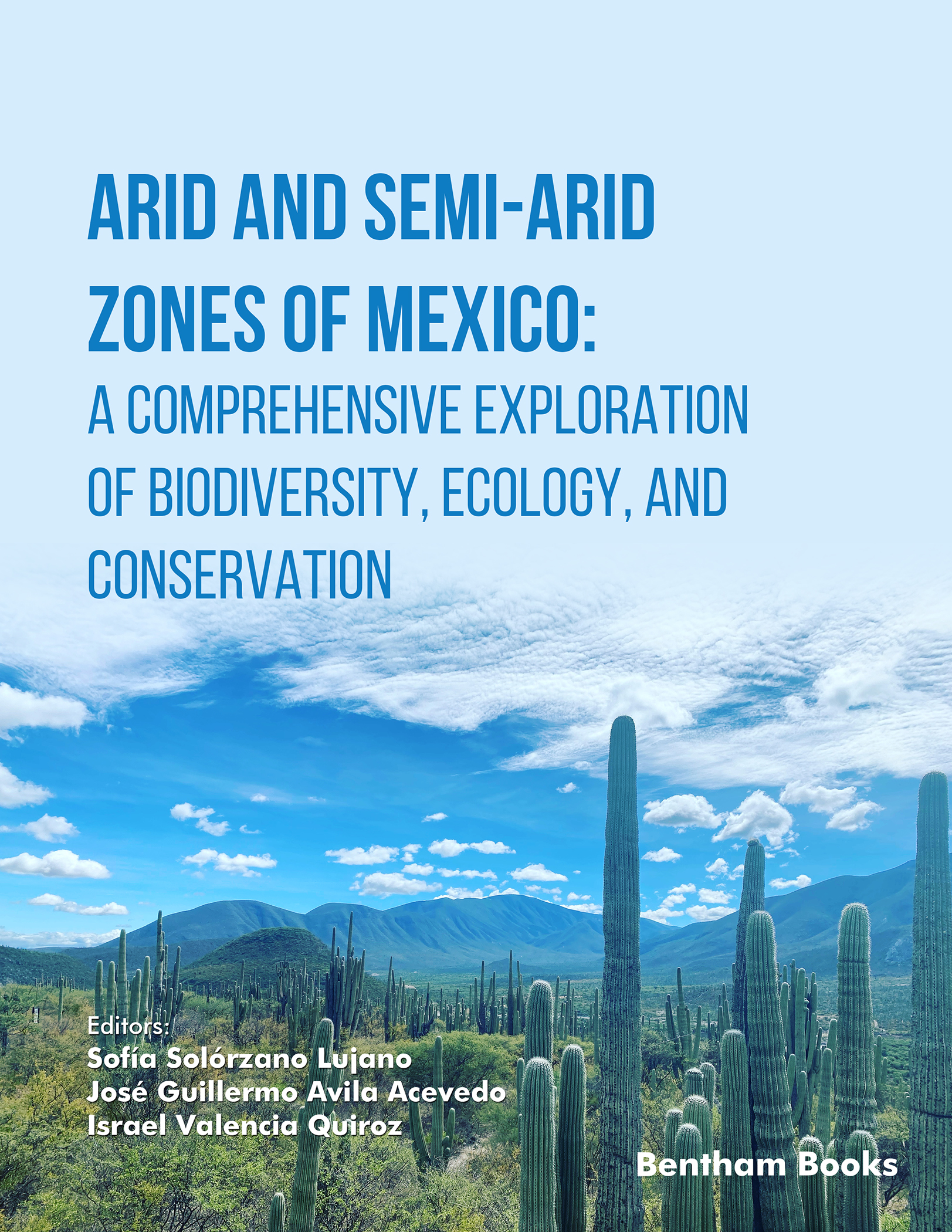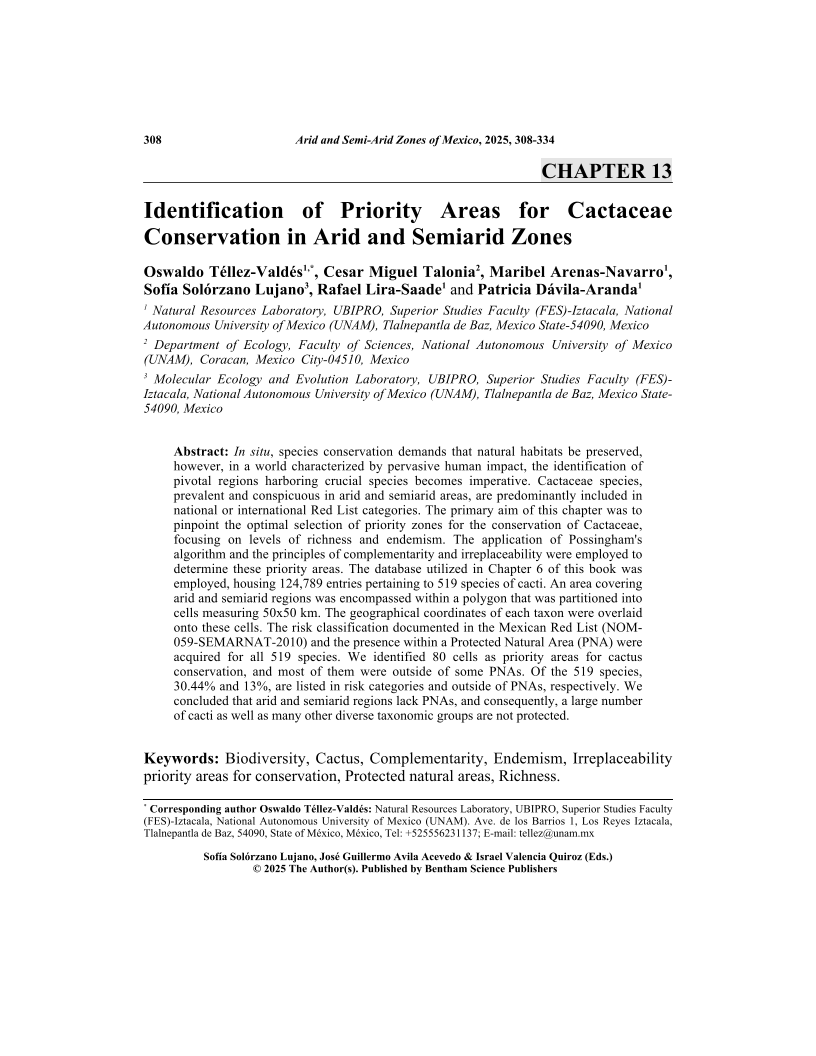Identification of Priority Areas for Cactaceae Conservation in Arid and Semiarid Zones

- Authors: Oswaldo Téllez Valdés1, Cesar Miguel Talonia2, Maribel Arenas-Navarro3, Sofía Solórzano Lujano4, Rafael Lira-Saade5, Patricia Dávila-Aranda6
-
View Affiliations Hide Affiliations1 Natural Resources Laboratory, UBIPRO, Superior Studies Faculty (FES)-Iztacala, National Autonomous University of Mexico (UNAM), Tlalnepantla de Baz, Mexico State-54090, Mexico 2 Department of Ecology, Faculty of Sciences, National Autonomous University of Mexico (UNAM), Coracan, Mexico City-04510, Mexico 3 Natural Resources Laboratory, UBIPRO, Superior Studies Faculty (FES)-Iztacala, National Autonomous University of Mexico (UNAM), Tlalnepantla de Baz, Mexico State-54090, Mexico 4 Molecular Ecology and Evolution Laboratory, UBIPRO, Superior Studies Faculty (FES)- Iztacala, National Autonomous University of Mexico (UNAM), Tlalnepantla de Baz, Mexico State54090, Mexico 5 Natural Resources Laboratory, UBIPRO, Superior Studies Faculty (FES)-Iztacala, National Autonomous University of Mexico (UNAM), Tlalnepantla de Baz, Mexico State-54090, Mexico 6 Natural Resources Laboratory, UBIPRO, Superior Studies Faculty (FES)-Iztacala, National Autonomous University of Mexico (UNAM), Tlalnepantla de Baz, Mexico State-54090, Mexico
- Source: Arid and Semi-Arid Zones of Mexico: A Comprehensive Exploration of Biodiversity, Ecology, and Conservation , pp 308-334
- Publication Date: June 2025
- Language: English
Identification of Priority Areas for Cactaceae Conservation in Arid and Semiarid Zones, Page 1 of 1
< Previous page | Next page > /docserver/preview/fulltext/9789815322460/chapter-13-1.gif
In situ, species conservation demands that natural habitats be preserved, however, in a world characterized by pervasive human impact, the identification of pivotal regions harboring crucial species becomes imperative. Cactaceae species, prevalent and conspicuous in arid and semiarid areas, are predominantly included in national or international Red List categories. The primary aim of this chapter was to pinpoint the optimal selection of priority zones for the conservation of Cactaceae, focusing on levels of richness and endemism. The application of Possingham's algorithm and the principles of complementarity and irreplaceability were employed to determine these priority areas. The database utilized in Chapter 6 of this book was employed, housing 124,789 entries pertaining to 519 species of cacti. An area covering arid and semiarid regions was encompassed within a polygon that was partitioned into cells measuring 50x50 km. The geographical coordinates of each taxon were overlaid onto these cells. The risk classification documented in the Mexican Red List (NOM059-SEMARNAT-2010) and the presence within a Protected Natural Area (PNA) were acquired for all 519 species. We identified 80 cells as priority areas for cactus conservation, and most of them were outside of some PNAs. Of the 519 species, 30.44% and 13%, are listed in risk categories and outside of PNAs, respectively. We concluded that arid and semiarid regions lack PNAs, and consequently, a large number of cacti as well as many other diverse taxonomic groups are not protected.
-
From This Site
/content/books/9789815322460.chapter-13dcterms_subject,pub_keyword-contentType:Journal -contentType:Figure -contentType:Table -contentType:SupplementaryData105

